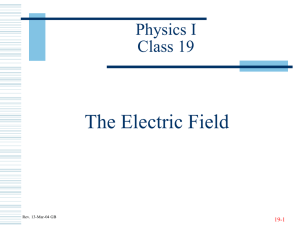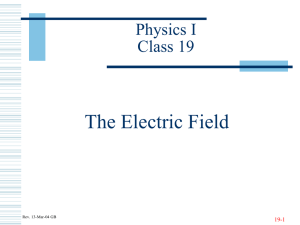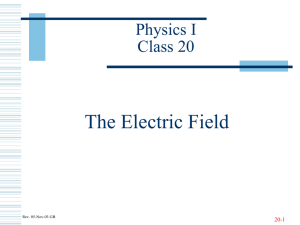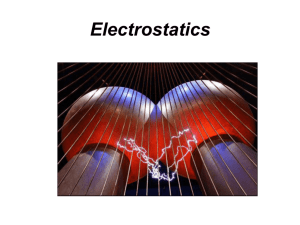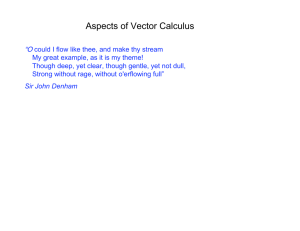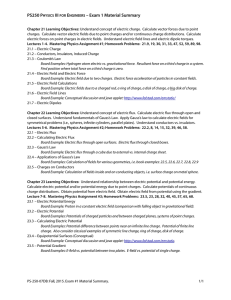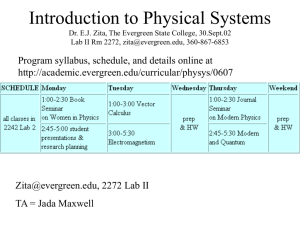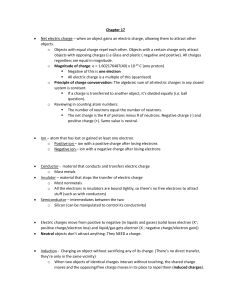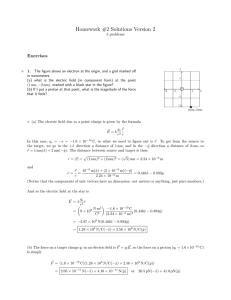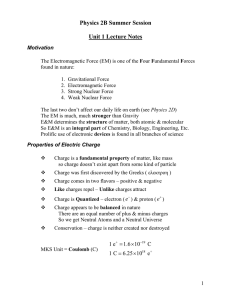Electrostatics
advertisement
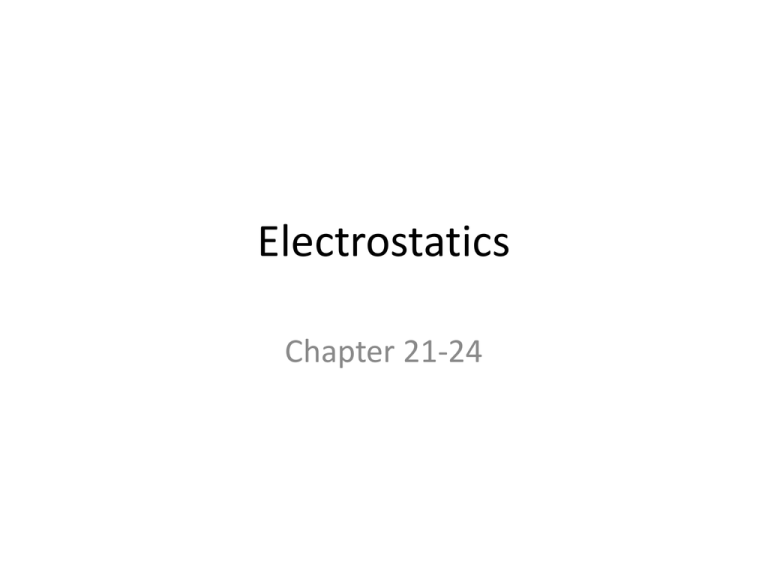
Electrostatics Chapter 21-24 Properties of Physical Objects • Mass/Inertial: – Gravity mass: inertia in gravitational interaction – Kinetic mass: inertia in any motion • Charge – Origin of charge: charged microscopic particles, electron, proton, neutron – Interaction between charges • Spin – Properties involved in magnetic interaction – Microscopic origin: particles, electron, proton, neutron, etc. Charge • Smallest charge unit: charge of 1 electron – 1 electron = 1.602x10-19Coulomb • Conservation of net charge – The number of positive and negative can change • Creation of charged objects – Two objects rubbed together – Charging by induction – Charging by conduction Point Charge Model Charge-Charge interaction • Description – Point model ( spatial distribution description) – Charged point ( physical property of the point) – Extensible (continuous distribution can be built based on many points model) • Interaction – Point-to-point electrotatic interaction (Coulomb’s Law) kq 1 q 2 F12 rˆ12 2 r12 – Superposition for many points model principles Fi F ji ji Examples Electrostatic Interaction • Conservation i Fi 0 – There exists a potentialenergy function Ui U ( ri ) F i – Potential energy function is not unique • Can differ by a constant: U+c is also valid • Commonly used: U(r=∞)=0; U(r) = kq1q2/r – Potential: due to distribution of other charges kq j U ( ri ) q i q i ( ri ; r j i ; q j i ) j i r ji Examples Electric Field • Need to introduce electric field: Separating intrinsic and extrinsic factors – Consider many point charges model Fi ji kq j F ji q i 2 rˆ ji q i E ( ri ; r j i ; q j i ) j i r ji – Electrostatic Force of ith point charge is equal to charge qi (properties of the point: intrinsic) times a function E (property related to space and properties of other point charges: extrinsic) – Function E is called electric field which is a vector quantity at a space location due to charges Properties of Electric Field • Distribution of vector E forms a vector field F 0 E 0 – Curl of Electric Field: – Divergence of Electric Field: E / 0 – Electron density ρ • Representation of Electric Field – Line representation of vector field: • No cross-over (curl of electric field = 0) • Originate from positive charge/End at negative charge • Intensity proportional to line density Examples • Electric field due to point charge + + - • Simplest electric field – Uniform electric field: E r E Q -Q + + Electric Flux and Gauss’s Law • Flux ΦE is a concept for vector field. – In the line representation: flux is the number of field lines crossing over a given surface – Since the field line density is proportional to electric field, the number of field lines should be electric field integrate over the surface E E d A E n dA • Gauss’s Law for Enclosed Surface – ΦE of enclosed surface = charge enclosed divides free space permitivity q E E d A E n dA 0 d A dA nˆ f dA S Simple Charge Distribution Models If the charge is distributed over a volume, surface or a line, we can relate the geometrical size of the object with the charge. + + + + dV + dl dQ = · dl dA + + + + + + + + + + + + + + dQ = · dA linear charge density + + ++ + ++ + + + ++ + + + ++ + + + + + dQ = · dV surface charge density volume charge density Examples
